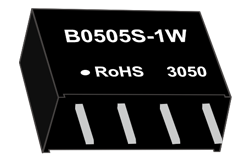noticias
Design and Development of an Industrial AC-DC Converter
Autor: Módulo de potencia ZYG Time: 2023-5-4
Introduction
Industrial AC-DC converters are essential components in modern power electronics systems. They convert alternating current (AC) power from the grid to direct current (DC) power for use in various industrial applications. The design and development of an efficient industrial AC-DC converter require a thorough understanding of power electronics principles and a careful selection of components to ensure optimal performance. This article discusses the essential steps involved in the design and development of an industrial AC-DC converter.
Step 1: Determine the Specifications
The first step in the design process is to determine the specifications of the industrial AC-DC converter. The specifications should include the input voltage and frequency, output voltage and current, power rating, and efficiency requirements. These specifications will guide the selection of components and the design of the converter.
Step 2: Select the Components
The selection of components is critical in the design of an efficient industrial AC-DC converter. The components include the rectifier, filter, and regulator circuits. The rectifier circuit converts the AC voltage to DC voltage. The filter circuit removes the high-frequency noise and ripple from the DC voltage. The regulator circuit regulates the output voltage to the desired level.
The rectifier circuit can be implemented using a diode bridge or a thyristor bridge. The diode bridge is simpler and cheaper, but it has higher losses and lower efficiency compared to the thyristor bridge. The filter circuit can be implemented using a capacitor or an inductor. The capacitor filter is simpler and cheaper, but it has high ripple voltage and low efficiency compared to the inductor filter. The regulator circuit can be implemented using a linear regulator or a switch-mode regulator. The linear regulator is simpler and cheaper, but it has high losses and low efficiency compared to the switch-mode regulator.
Step 3: Design the Circuit
The circuit design involves the selection of component values and the calculation of circuit parameters based on the specifications. The design should ensure that the circuit operates within the specified input voltage and frequency ranges and produces the desired output voltage and current. The design should also ensure that the circuit meets the efficiency and power rating requirements.
The circuit design should consider the thermal management of the components to prevent overheating and ensure long-term reliability. The design should also consider the electromagnetic interference (EMI) and electromagnetic compatibility (EMC) requirements to prevent interference with other electronic devices.

Step 4: Prototype and Test
After the circuit design, the next step is to build a prototype of the industrial AC-DC converter and test its performance. The prototype should be tested under various operating conditions to ensure that it meets the specifications and performance requirements. The tests should include input voltage and frequency variations, load variations, and temperature variations.
The test results should be analyzed to identify any design flaws and improve the design. The thermal management and EMI/EMC performance of the prototype should also be evaluated and improved as necessary.
Step 5: Final Design and Production
After the prototype testing, the final design of the industrial AC-DC converter can be optimized based on the test results. The final design should incorporate any improvements identified during the prototype testing. The optimized design should be documented and verified.
The production of the industrial AC-DC converter can then proceed, using the optimized design. The production process should ensure that the final product meets the specifications, performance requirements, and quality standards. The production process should also ensure that the product is reliable and cost-effective.
Conclusion
The design and development of an industrial AC-DC converter require a thorough understanding of power electronics principles and a careful selection of components to ensure optimal performance. The design process involves determining the specifications, selecting the components, designing the circuit, prototyping and testing, and finalizing the design for production. The final product should meet the specifications, performance requirements, and quality standards while being reliable and cost-effective.
Anterior: AC-DC Power Supply: A Reliable Solution for Your Electrical Needs
Próximo: Designing an AC-DC Converter Circuit
informacion relevante
-
2023-8-20
Efficient LED Lighting: 12V AC to DC Converter for Enhanced Power Supply
Introduction: In recent years, there has been a significant shift towards energy-efficient lighting solutions. One such solution is LED lighting, which offers numerous benefits over traditional incandescent and fluorescent bulbs. LED lights are known for their durability, long lifespan, and low energy consumption. However, to power these LED lights, an efficient power supply is required. This article explores the use of a 12V AC to DC converter as an enhanced power supply for LED lighting. The Need for a Power Converter: LED lights operate on low voltage direct current (DC) power. However, in most residential and commercial settings, the available power source is alternating current (AC) with a higher voltage. Therefore, a power converter is necessary to transform the AC...
Ver detalles -
2023-7-17
China HP Series supplier: The Ultimate AC DC Converter Solution
Introduction: HP Series is a revolutionary AC DC converter solution that provides unmatched efficiency, reliability, and versatility for various applications. Designed by a team of experts at our state-of-the-art facility, this cutting-edge converter solution is set to redefine power conversion technology. In this article, we will explore the features and benefits of the HP Series and delve into its impact on different industries. 1. Unparalleled Efficiency: The HP Series boasts exceptional efficiency levels, thanks to its advanced power conversion architecture. With a conversion efficiency of up to 98%, it ensures minimal power loss during the conversion process, resulting in significant energy savings. This efficiency makes it an ideal choice for industries striving to reduce their carbon footprint and operating costs....
Ver detalles -
2023-5-30
SD Series AC DC Power Supply: Reliable Power for Your Devices
As technology advances, so does the need for reliable power sources. The SD Series AC DC power supply is a powerful and dependable option for any device requiring consistent and stable power. Whether for industrial equipment, medical devices or telecommunications systems, the SD Series AC DC power supply is a reliable choice. One of the key features of the SD Series AC DC power supply is its high-efficiency rating. With a conversion efficiency of up to 94%, it ensures that your devices receive the power they need without wasting energy. This means less heat generation and reduced energy consumption, which can translate into cost savings for your business. Another benefit of the SD Series AC DC power supply is its...
Ver detalles -
2022-9-14
Requisitos de llenado del módulo de alimentación de CA CC Es muy importante encapsular y sellar los módulos de alimentación de CA CC. Este proceso implica no solo la protección de los módulos de alimentación de CA y CC (impermeables, a prueba de humedad, a prueba de polvo, anticorrosión, etc.), sino también el diseño térmico de los módulos de alimentación de CA y CC. Los materiales de encapsulado del módulo de potencia generalmente se dividen en tres categorías: resina epoxi, poliuretano y caucho de silicona. Debido a la dureza de la resina epoxi, no se puede usar para empaques de módulos y sensibles a la tensión y componentes SMT, por lo que básicamente se elimina en la potencia del módulo. suministros. Pero las resinas epoxi también se utilizan en fuentes de alimentación de micropotencia de costo crítico debido a su bajo costo. Algunos fabricantes domésticos de malas fuentes de alimentación también usan esta resina epoxi para CA y ...
Ver detalles -
2023-8-28
The Electric Power Series: Illuminating the World
Electricity has become an essential part of our daily lives. From powering our homes to fueling industries, electricity plays a crucial role in shaping the way we live, work, and interact with the world. The Electric Power Series, a revolutionary advancement in electrical technology, has been instrumental in illuminating the world. The Electric Power Series comprises a range of groundbreaking inventions and innovations that have revolutionized the generation, transmission, and consumption of electrical power. From the invention of the electric generator to the development of efficient transmission systems, this series has paved the way for the electrification of our society. The first major breakthrough in the Electric Power Series was the invention of the electric generator. In the late 19th...
Ver detalles -
2023-6-13
24V AC to DC Converter: Transforming Alternating Current into Direct Current
Alternating current (AC) is the type of electrical current that we most commonly use in our homes and businesses. However, many electronic devices and appliances require direct current (DC) to function properly. In order to convert AC into DC, a 24V AC to DC converter is often used. A 24V AC to DC converter is a device that transforms the voltage of an AC power source into a steady DC voltage. This device is commonly used in a variety of applications, including in computers, televisions, and other electronic devices. The process of converting AC into DC involves several steps. The first step is to use a transformer to change the voltage of the AC power source. This is necessary because...
Ver detalles


















